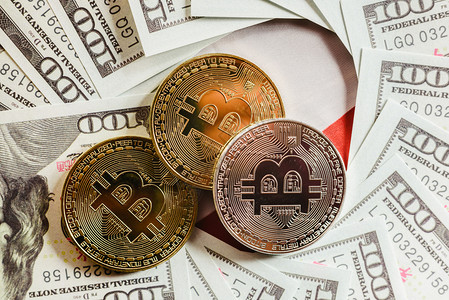
Under the calm appearance of the financial market, another sharp fluctuation in the price of bitcoin has once again become the focus of market attention. Recently, the price of bitcoin broke through to $68,400 / coin, a 24-hour increase of 4.59%, which undoubtedly touched the sensitive nerves of the market again. However, behind this seemingly "thriving" rise is a series of problems worthy of in-depth analysis and criticism.
The surge in the price of bitcoin is widely attributed to the massive inflow of market funds, subtle changes in macroeconomic policy and shifts in market sentiment. However, in-depth analysis is not difficult to find that although these factors have promoted the rise of Bitcoin price to a certain extent, they have also buried a huge bubble risk for it.
First, the flow of money into the market is often the result of short-term speculation rather than a long-term investment based on Bitcoin's intrinsic value. When sentiment is high, money pours into the market, pushing prices higher; When sentiment turns, the money quickly leaves, causing prices to plummet. This highly dependent on market sentiment of the fund flow pattern, making Bitcoin prices show high volatility, its behind the bubble risk can not be ignored.
Second, the impact of changes in macroeconomic policy on the price of bitcoin also tends to be short-term and uncertain. The proximity of the US presidential election, for example, does reduce policy uncertainty, but the effect is more psychological than substantive. The Federal Reserve's monetary policy adjustment, such as slowing the pace of interest rate cuts, may trigger market concerns about inflation and currency depreciation, but these concerns are not enough to support the long-term rise in Bitcoin prices.
Strong inflows into Bitcoin spot ETFs have been cited as one of the core drivers of the rally. But there are also big risks behind the ETF boom. On the one hand, the launch of ETF does provide investors with more convenient investment channels and lower the investment threshold. But on the other hand, the leverage effect of ETFs also amplifies market volatility. When the market is rising, ETF leverage accelerates price increases; Once the market falls, the selling pressure on ETFs will also increase rapidly, causing prices to plummet. This highly sensitive price response mechanism makes the Bitcoin market more vulnerable to external shocks.
In addition, the launch of ETFs has also intensified the speculative atmosphere in the market. Many investors view ETFs as a vehicle for quick profits rather than a means to invest for the long term. Such short-term speculation not only increases the volatility of the market, but also undermines the healthy development of the market.
Regulatory policies for digital assets such as bitcoin have been the focus of attention in the market. Recently, the increased acceptance of Bitcoin by governments in many countries and regions and the gradual clarity of regulatory policies have indeed injected a certain amount of confidence into the Bitcoin market. However, the dual impact of regulatory policy cannot be ignored.
On the one hand, strict regulatory policies can curb market speculation to a certain extent and protect the legitimate rights and interests of investors. But on the other hand, too strict regulation may also inhibit market innovation and development, and even trigger panic selling in the market. Especially in the context of the current uncertain global economic environment, any move in regulatory policy could have a huge impact on the Bitcoin market.
In addition, the differences in regulatory policies between different countries and regions also add to the complexity and uncertainty of the market. When investing in Bitcoin, investors need to pay close attention to the dynamic changes of regulatory policies in various countries in order to adjust their investment strategies in a timely manner. However, this high level of policy sensitivity also increases the risk and difficulty of investment.
As a highly volatile asset, Bitcoin's price fluctuation is large and high frequency, which is unmatched by any traditional asset. This high level of volatility makes investing in bitcoin fraught with risk.
First, wild fluctuations in the price of bitcoin can cause investors to suffer huge losses. Especially when the market is falling, investors may face the risk of a sharp decline in assets or even an explosion. This risk is often too much for the average investor to bear.
Secondly, the information asymmetry of the Bitcoin market also increases the risk of investment. Due to the lack of effective regulation and information disclosure mechanisms in the Bitcoin market, it is often difficult for investors to obtain accurate market information and data. This information asymmetry makes investors face great uncertainty when making investment decisions.
Finally, the speculative atmosphere in the Bitcoin market also exacerbates the risk of investment. Many investors see Bitcoin as a tool to make a quick profit rather than a means to invest for the long term. This kind of short-term speculation not only increases the volatility of the market, but also makes investors more susceptible to the influence of market sentiment and make wrong investment decisions.
In the face of all kinds of chaos and risks in the Bitcoin market, investors should remain rational and vigilant. First of all, it is necessary to fully understand the investment risks of Bitcoin as a highly volatile asset and avoid blindly following the trend and excessive speculation. Secondly, it is necessary to fully understand the operating mechanism of the Bitcoin market and the changing trend of regulatory policies in order to adjust the investment strategy in a timely manner. Finally, it is necessary to do a good job in risk management, set reasonable stop loss points and investment plans, and avoid suffering huge losses because of momentary impulse.
At the same time, regulators should also strengthen the supervision of the Bitcoin market, improve relevant laws, regulations and regulatory mechanisms, and protect the legitimate rights and interests of investors. Only through effective regulation and the healthy development of the market can we ensure the stable operation and healthy development of digital assets such as bitcoin in the financial market.
In short, although the price of bitcoin has risen again, it has attracted widespread attention from the market, but the hidden worries and risks behind it can not be ignored. Investors should remain rational and vigilant, fully assess the market environment and their own risk tolerance, and avoid blindly following the trend and investing. At the same time, regulators should also strengthen the supervision of the market to ensure the healthy development and stable operation of the market.

The South Korean political arena has once again been embroiled in a public controversy over a judicial investigation that has shaken the entire nation.
The South Korean political arena has once again been embroi…
On the morning of December 29th local time, the precious me…
According to the US media Barchart, recently, the fluctuati…
On December 29th, Mar-a-Lago in Florida, USA, witnessed a h…
SoftBank Group announced on Monday that it has agreed to ac…
Recently, the US State Department issued a visa ban, adding…